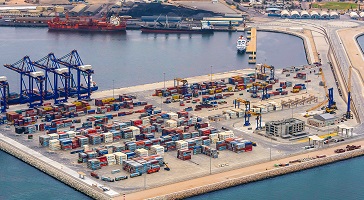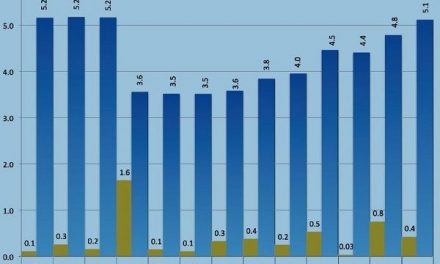
Trade activity slips to N$21.1 billion in March

According to the latest trade statistics released by the Namibia Statistics Agency (NSA), total trade activity, encompassing imports and exports, dipped to N$21.1 billion in March 2024, marking a 6.8% year-on-year decrease.
The decline primarily stemmed from a reduction in exports over the same period. However, there was a monthly upswing in exports, rising from N$6.1 billion in February 2024 to N$8.3 billion in March 2024.
Conversely, imports surged by 27.9% month-on-month and 2.9% year-on-year.
The trade balance expanded to N$4.5 billion in March 2024 compared to N$3.9 billion in February 2024 and N$2.2 billion in March 2023.
Petroleum oils accounted for the largest portion of the import bill, while precious stones (diamonds) dominated the export basket, as highlighted by the NSA.
Trade volumes were largely influenced by goods within the manufacturing sector, with exports totaling N$5 billion and imports valued at N$8.4 billion. This underscores the significance of manufacturing activities in Namibia’s trade dynamics during this period.
Namibia emerged as a net importer of manufacturing mining and quarrying products, underscoring its dependence on these sectors to fulfill domestic demand and industrial requirements.
However, the country maintains its status as a net exporter of agricultural, forestry, fishing, and transport and storage products, showcasing its strengths in these areas and its ability to contribute positively to international trade balances.
In March 2024, live sheep, meat, and sheep products were highlighted as the commodity of the month, with exports totaling N$97.3 million, slightly down from N$102.2 million in March 2023. These exports predominantly went to South Africa, with Zambia and Botswana also contributing.
Simonis Storm Securities (SSS) noted that this observation aligns with their agri-monthly report, citing an increase in sheep marketing during March 2024, particularly in live exports. They attributed this shift to prevailing drought conditions and lower producer prices offered by local abattoirs.
Walvis Bay remains Namibia’s primary border post for imports and exports, with imported goods amounting to N$5.1 billion. SSS emphasized Namibia’s advantage of no load shedding, ensuring optimal operation of ports and border posts, and facilitating smooth export flow from the port in Walvis Bay.
SSS emphasized the need for reforms to enhance performance on key indicators such as timeliness, logistics competence, and quality to improve competitiveness in the global market.













































